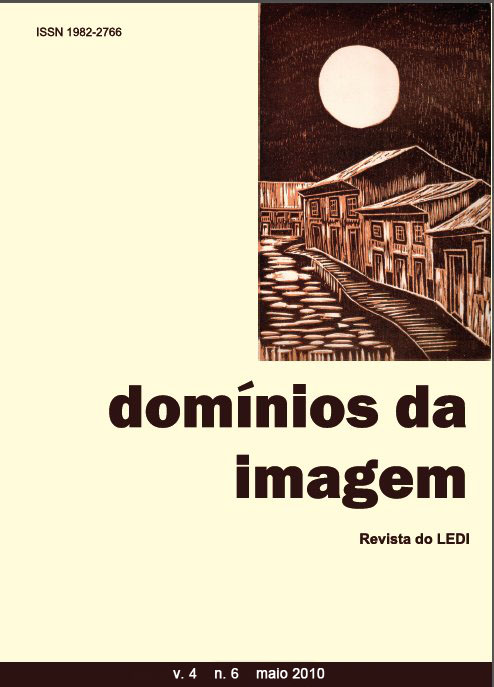Orality, teaching and images in the view of Túndalo
DOI:
https://doi.org/10.5433/2237-9126.2010v4n6p7Keywords:
Visio Tnugdali (Visão de Túndalo), Education, Orality, Images.Abstract
Visio Tnugdali is an exemplum, a moral narrative with the task of convincing an audience through a moral lesson. The exempla were presented by religious preachers for the purpose of conversion. The narrative was produced in twelfth century by a Cistercian monk e translated to Portuguese in the fifteenth century (Visão de Túndalo), which shows its importance in the late Middle Ages. The pedagogical aspect is well highlighted by orality. It is through dialogue between the angel and Túndalo which are explained in detail the torments of addition related to shortages of sinners. The heavenly being also explains to the knight the motives for the elect to stay in the three areas of Paradise, the Walls of Silver, Gold and Precious Stones, according to their merit. In addition to talking with the rider Túndalo in order to convince him to become a good Christian, the manuscript also converses with the audience to whom the text was addressed through various levels of orality (Zumthor), with verbs such as listening, speak, tell. To reinforce the educational aspect of the exemplum are emphasized images related to the senses (sight, hearing, smell, taste and touch) in Paradise and Hell. The iconography of the late Middle Ages also confirms some descriptions of the afterlife topography shown in the visio.Downloads
References
BÍBLIA de Jerusalém. São Paulo: Paulus, 1995.
CAROZZI, Claude. Le Voyage de l'Âme dans l'AuDelà d'Après la Littérature Latine (V-XIIIéme Siècle). Paris: École Française de Rome, 1994.
DANTE ALIGHIERI. Divina Comédia. São Paulo: Abril Cultural, 1973. (Os Pensadores)
DELUMEAU, Jean. O que Sobrou do Paraíso? São Paulo: Companhia das Letras, 2003.
DELUMEAU, Jean. História do Medo no Ocidente. São Paulo: Companhia das Letras, 2009.
ESTEVES, F. M. (Ed.). Visão de Túndalo. Revista Lusitana, Lisboa, v. 3, p. 97-120, 1895.
JEANROY, A. ; VIGNAUX, A. (Publiés). Vision de Tindal. In: Voyage de Raimon Perellos au Purgatoire de Saint Patrice: visions de Tindal et de Saint Paul. Textes languedocienes du XV siècle. Tolouse: E. Privat, 1903, p. 57-119.
LE GOFF, Jacques. Além. In: Dicionário Temático do Ocidente Medieval. São Paulo: EDUSC/Imprensa Oficial do Estado, 2002, v. 1, p. 21-33.
LE GOFF, Jacques. O Imaginário Medieval. Lisboa: Editorial Estampa, 1994.
SCHMITT, Jean-Claude. O Corpo das Imagens. São Paulo: EDUSC, 2007.
VILLAVERDE, P. (Ed.). Visão de Túndalo. Revista Lusitana, v. 4, p. 38-52, 1982-1983.
ZIERER, Adriana. Paraíso versus Inferno: A Visão de Túndalo e a Viagem Medieval em Busca da Salvação da Alma (Século XII). In: FIDORA, Alexande; PASTOR, Jordi Pardo (Coord.). Expresar lo Divino: Lenguage, Arte y Mística. Mirabilia. Revista de História Antiga e Medieval. São Paulo: Instituto Brasileiro de Filosofia e Ciência Raimundo Lúlio/J.W. Goethe-Universität Frankfurt/Universitat Autònoma de Barcelona, 2003. v. 2, p. 137-162.
ZIERER, Adriana. Aspectos Educacionais da Salvação Cristã na Visão de Túndalo. In: OLIVEIRA, Terezinh; VISALLI, Angelita M. (Org.). Pesquisas em Antigüidade e Idade Média: olhares interdisciplinares. São Luís: Ed. UEMA, 2007. p. 293-308.
ZUMTHOR, Paul. A Letra e a Voz. A Literatura Medieval. São Paulo: Companhia das Letras, 1993.
Downloads
Published
How to Cite
Issue
Section
License
Copyright (c) 2010 Domínios da ImagemDomínios da Imagem adopts the Creative Commons Attribution 4.0 International License, therefore, the copyrights related to the published articles belong to the author(s), who grant the journal the exclusive right of first publication.
Under this license it is possible to: Share - copy and redistribute the material in any medium or format. Adapt - remix, transform, and build upon the material, giving due credit and providing a link to the license and indicating if changes were made.












 The works in this journal are licensed under Creative Commons .
The works in this journal are licensed under Creative Commons .